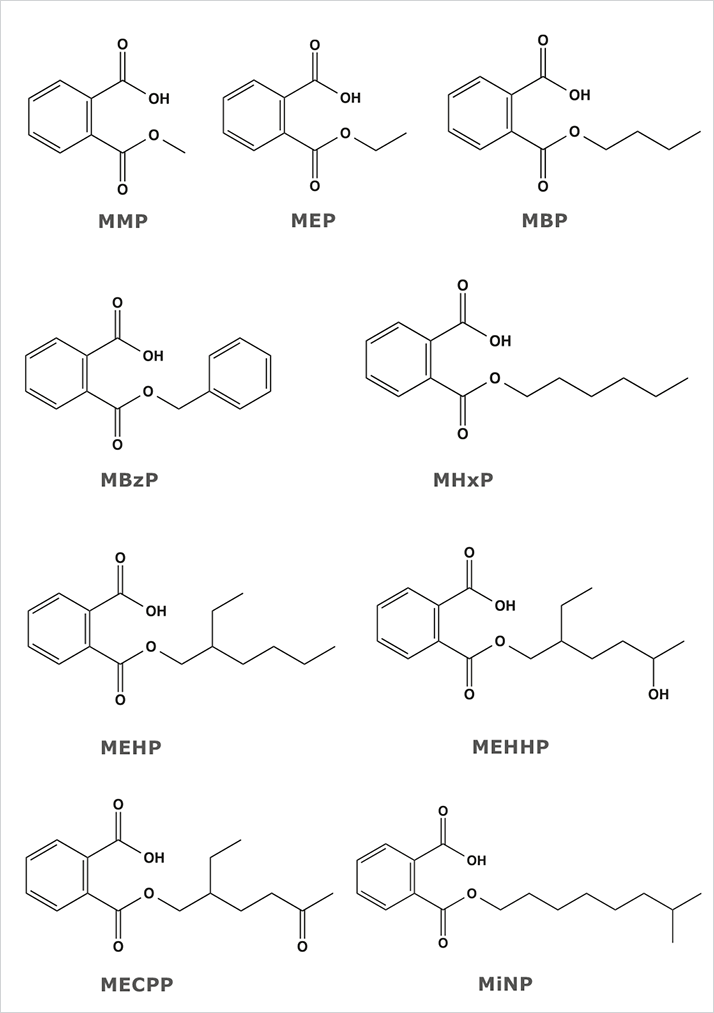This application note describes the extraction of nine phthalate metabolites from human urine using ISOLUTE® ENV+ solid phase extraction columns.
Introduction
Phthalates are plasticizers used in industry to adjust the mechanical (and sometimes barrier) properties of plastics in consumer products and packaging. Their ubiquitous presence in our everyday lives constantly presents threats of low level exposure through inhalation or ingestion. Thus, large biomonitoring studies including the US National Health and Nutrition Examination Survey (NHANES) have screened for phthalates since 1999. Because phthalates themselves are difficult to eliminate from sampling and processing materials, including laboratory ware and instruments, analysis of phthalates in human samples have focused on their monoester metabolites. Monoethyl phthalate (MEP), monobutyl phthalate (MBP), monobenzyl phthalate (MBzP) and mono (2-ethyl-5-hydroxyhexyl) phthalate (MEHHP) have been constantly detected in human urine since the first NHANES survey of phthalates in 1999. Phthalates exposure has been associated with decreased anogenital distance, lower sperm count, cryptorchidism and hypospadias among other clinical endpoints in humans.

To facilitate the high throughput population screening of phthalate metabolites, sample preparation methods need to be simple, sensitive and robust to mitigate matrix suppression and instrument down time common to many dilute and shoot approaches to mass spectrometry. Thus, a solid phase extraction procedure was developed for these analytes. This application note details the optimization strategy for nine phthalate metabolites. Proof-of-concept for this sample preparation method was determined on a set of real patient samples (n=5). The results were in general agreement with previously reported concentration ranges for these compounds. It is anticipated that this method will have significant impact in environmental biomonitoring strategies for these analytes.
 Figure 1. Structures of the target analytes in the phthalate metabolites panel.
Figure 1. Structures of the target analytes in the phthalate metabolites panel.Analytes
Monomethyl phthalate (MMP); Monoethyl phthalate (MEP); Monobutyl phthalate (MBP); Monobenzyl phthalate (MBzP); Monohexyl phthalate (MHxP); Mono (2-ethylhexyl) phthalate (MEHP); Mono(2-ethyl-5-hydroxyhexyl) phthalate (MEHHP); Mono (2-ethyl-5-carboxypentyl) phthalate (MECPP); Monoisononyl phthalate (MiNP).





